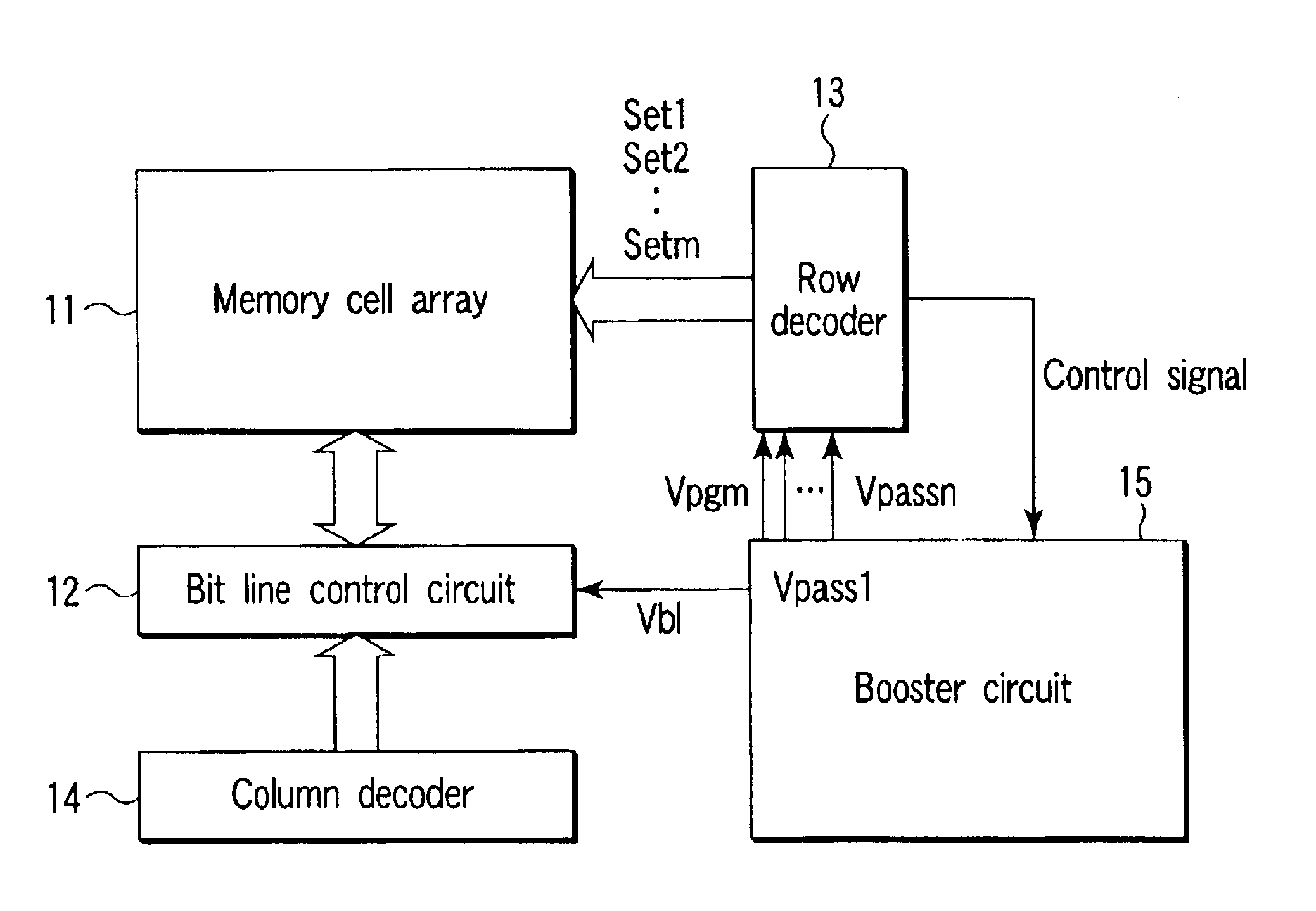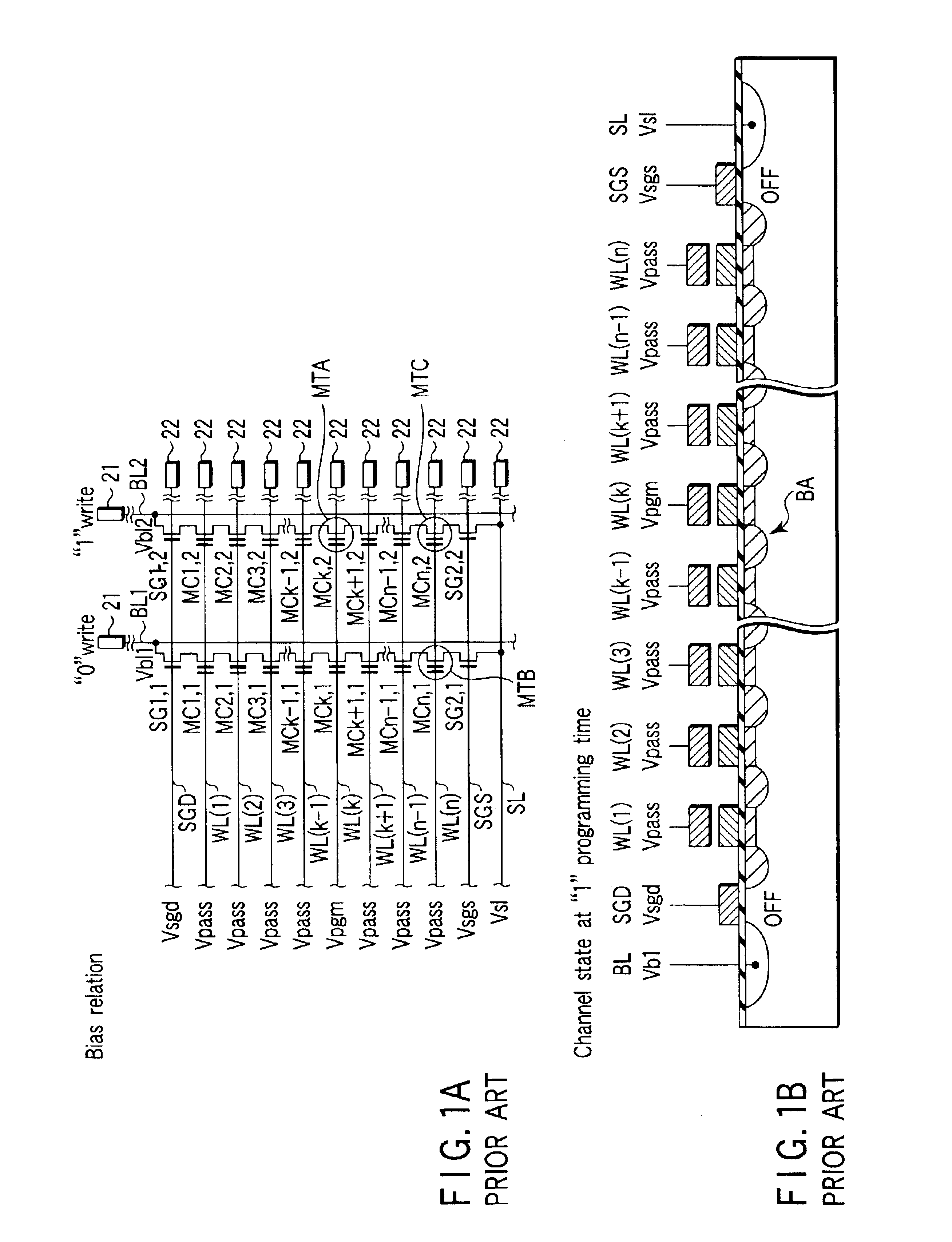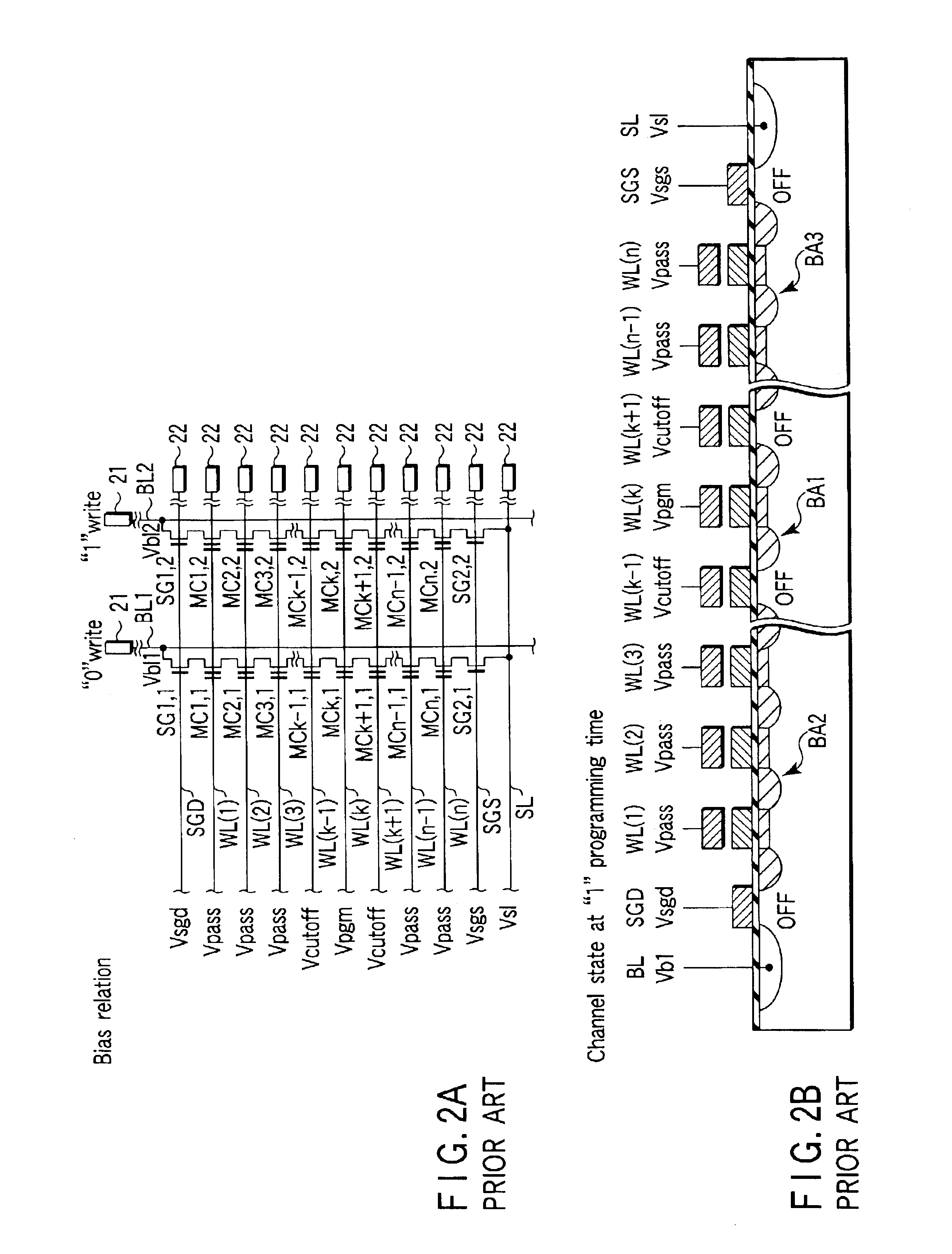NAND type flash EEPROM in which sequential programming process is performed by using different intermediate voltages
a technology of sequential programming and intermediate voltage, which is applied in the field of nand-type flash eeprom data programming system, can solve the problems of scaling and increasing the erroneous programming stress, and the programming stress decreases
- Summary
- Abstract
- Description
- Claims
- Application Information
AI Technical Summary
Benefits of technology
Problems solved by technology
Method used
Image
Examples
first embodiment
FIG. 5 is a block diagram showing an extracted main portion of a nonvolatile semiconductor memory device according to a first embodiment of the present invention, for illustrating the nonvolatile semiconductor memory device. In a memory cell array 11, NAND cell units are arranged in row and column directions in a matrix form, and control gate lines, bit lines, selection gate lines, source lines and the like are wired. A bit line control circuit 12 and row decoder 13 are connected to the memory cell array 11. The bit line control circuit 12 performs operations of latching program data, sensing data at the readout time and the like. A column decoder 14 which decodes a column address signal to select a column of the NAND cell units is connected to the bit line control circuit 12. A booster circuit 15 creates and generates program voltage Vpgm, a plurality of different intermediate voltages Vpass1 to Vpassn and bit line voltage Vbl from the power supply voltage. The row decoder 13 suppl...
second embodiment
A nonvolatile semiconductor memory device according to a second embodiment of this invention has basically the same configuration as that of the first embodiment and can be realized by modifying the row decoder 13 in the circuit of FIG. 5 to perform the selection operation as will be described below.
FIGS. 9A, 9B and 9C are equivalent circuit diagrams showing bias states at the time of data programming into memory transistors respectively connected to the nth, kth and first control gate lines from the bit line side. In the present embodiment, it is assumed that the programming process is a sequential programming process performed in order from the control gate line WL(n) on the source side to the control gate line WL(1) on the bit line side. Program voltage Vpgm is applied to a selected control gate line WL(k). Low voltage Vcutoff (for example, 0V) which cuts off the memory transistor is applied to the control gate line WL(k+1) which lies adjacent to and on the source line side of th...
third embodiment
A nonvolatile semiconductor memory device according to a third embodiment of this invention has basically the same configuration as that of the first embodiment and can be realized by modifying the row decoder 13 in the circuit of FIG. 5 to perform the selection operation as will be described below.
FIGS. 10A, 10B and 10C are equivalent circuit diagrams showing bias states at the time of data programming into memory transistors respectively connected to the nth, kth and first control gate lines from the bit line side. In the present embodiment, it is assumed that the programming process is a sequential programming process performed in order from a control gate line WL(n) on the source side to a control gate line WL(1) on the bit line side. Program voltage Vpgm is applied to a selected control gate line WL(k). Low voltage Vcutoff (for example, 0V) which cuts off the memory transistor is applied to a control gate line WL(k+j) (j is an integer equal to or larger than 2). Intermediate vo...
PUM
 Login to View More
Login to View More Abstract
Description
Claims
Application Information
 Login to View More
Login to View More - R&D
- Intellectual Property
- Life Sciences
- Materials
- Tech Scout
- Unparalleled Data Quality
- Higher Quality Content
- 60% Fewer Hallucinations
Browse by: Latest US Patents, China's latest patents, Technical Efficacy Thesaurus, Application Domain, Technology Topic, Popular Technical Reports.
© 2025 PatSnap. All rights reserved.Legal|Privacy policy|Modern Slavery Act Transparency Statement|Sitemap|About US| Contact US: help@patsnap.com



